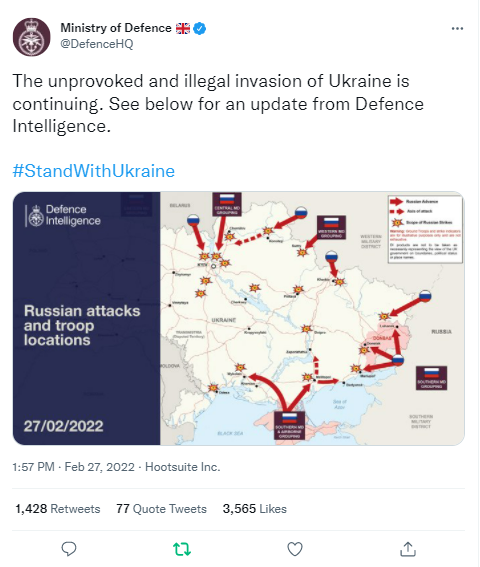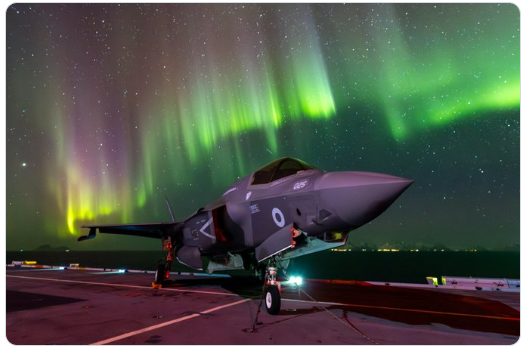Digital diplomacy is not a new phenomenon. Beginning in the 1990s, foreign ministries (MFAs) sought to adopt and leverage digital technologies. In some cases, this was as rudimentary as using emails as opposed to diplomatic cables or creating intranets, internal networks that enabled diplomats to share information and knowledge with peers. By the early 2000’s, some foreign ministers began publishing weekly blogs, as was the case with former Swedish foreign minister Carl Bildt. As the decade continued, MFAs began experimenting with virtual Embassies created in virtual worlds such as Second Life. These were meant to serve as global Embassies where diplomats could converse and engage with a global public. The next wave of digitalization saw MFAs migrate to social media sites, write their own algorithms and develop digital techniques to map, track and disable fake social media accounts.
The adoption of digital technologies can be driven by two forces- internal and external. Internally, an MFA may decide to adopt a specific digital technology to obtain a concrete foreign policy goal. For instance, the Israeli MFA has developed its own algorithm to stem the flow of hate speech on Facebook. New Zealand’s MFA has invested in network analysis tools to better measure digital impact. External events may also impact the process of digitalization. The Arab Spring led to the mass adoption of social media as diplomats hoped to communicate directly with foreign publics. The Covid19 pandemic saw diplomats embrace Zoom and virtual meetings which substituted face to face meetings.
Crises, in particular, may drive the process of digitalization. It is during crises, and violent crises in particular, that governments may experiment with new technologies and even improvise, using old technologies in new ways. At times, governments may hope to reach larger audiences and draw attention to a crisis. Other times governments may hope to harm the image of an adversary. The past week has demonstrated that digital technologies have had a substantial impact on the management of the Ukrainian Crisis, brought about by Russia’s invasion into Ukraine.
In this post, I review seven ways in which digital technologies have impacted the management of this crisis.
1. Ukraine’s Minister of Digital Transformation: One might wonder how a Minister of Digital Transformation can help manage a crisis. Digital transformation does, after all, refer to a long term process in which governments leverage new technologies. However, over the past four days the Ukrainian Minister, Mykhailo Fedorov, has used his Twitter account to publicly interact with tech companies. In one tweet, the Minister published a letter sent to the CEOs of social media companies urging them to shut down Russian accounts and especially the accounts of state-run media organizations such as Russia Today. In another tweet, the Minister asked Elon Musk to ensure internet access in Ukraine through Tesla satellites. In yet another tweet, the Minister called on Visa and Mastercard to refuse payments from Russian clients thus isolating Russia financially. The Minister’s tweets have been enthusiastically shared online, adding pressure onto tech companies. Musk, for one, replied to the Minister’s tweet and his request. It is the public nature of the Minister’s appeals that help exert pressure on tech companies who face reputational damage if they do not support Ukraine’s heroic stand against Russia.
2. Hybrid Diplomacy: Over the past four days, high ranking diplomats, foreign ministers and heads of state have held numerous consultations. EU foreign ministers came together to agree on financial sanctions on Russia, NATO leaders have met to respond to Russia’s nuclear threats while G7 leaders have met to coordinate diplomatic action. Many of these meetings have taken place via Zoom and video conferencing tools. These meetings augment face-to-face interactions, but do not replace them altogether. Through virtual meetings, world leaders have been able to mobilize more quickly and act with greater speed. Indeed, this crisis has seen the rapid acceleration of diplomacy. Consider that it took months to organize the 1991 coalition against Iraq but it took 2 days for the EU to sanction Russian banks and decide, historically, to arm Ukraine.
3. Real Time Narration– As has been the case with all recent crises, the Ukrainian invasion has been accompanied by both disinformation and misinformation. By disinformation I refer to deliberate attempts to share false information and sway public opinion. By misinformation I refer to the inadvertent publication of false information. The cumulative effect of both disinformation and misinformation is that it is harder for social media users to access accurate information and understand events unfolding in Ukraine. For this reason, the UK’s Ministry of Defense has routinely published intelligence updates which verify information circulated online. These updates, published every few hours, enable social media users to understand rapidly unfolding events while limiting the reach and impact of dis and misinformation. Notably, the UK Ministry of Defense publishes these updates in near-real time thus meeting digital publics’ desire to learn about world events as they unfold.
4. Ukraine Crowdfunds the War– Over the past 72 hours, Ukraine has begun to crowdfund its war. Ukrainian digital diplomacy channels have called on users to help fund the opposition to Russia. In some cases, Embassies have asked for cryptocurrency donations. In other cases, the Ukrainian military published its bank account details making it possible for digital publics to directly contribute to Ukraine’s armed forces. While the amount of money raised is unknown, this is the first instance in which a sovereign state has sought to fund a war through digital crowdfunding.
5. Zelenskyy to the Rescue- Since the start of the current Crisis, Ukraine’s President Zelenskyy has turned into a social media icon. This has been achieved by the publication of videos in which Zelenskyy dispels Russian disinformation and rally international support for his nation’s cause. In one short video, Zelenskyy and other national leaders were seen in Kiev stating that they had not and would not flee Kiev. Another video depicted the President eating breakfast with troops in a makeshift tent while in a third, Zelenskyy was filmed in Kiev stating that Kiev was holding on, and so was he. Ukrainian digital diplomacy accounts have added to Zelenskyy’s popularity. The Ukrainian Embassy to London tweeted the President’s response to an American offer for evacuation. Zelenskyy reportedly said “the fight is here. I need ammunition, not a ride”. As his online popularity soars, images of Zelenskyy in combat fatigue circle the globe while memes and online videos have compared Zelenskyy’s leadership with Putin’s tyranny. Zelenskyy has come to embody Ukrainian heroism and his online image has translated into large-scale offline support for tough measures against Russia. This is an example of how the digital and offline spheres impact one another.
6. Online Public Opinion Galvanized Leaders– Social media users across the world have empathized with Ukraine’s predicament and demanded action from their leaders. According to some experts, even Russian news outlets such as Russia Today have been bombarded by an especially high rate of negative comments and statements. Online public opinion has even caused some states to account for their offline actions. In a crucial UN Security Council vote, India chose to abstain rather than vote in favor of condemning the Russian invasion. Online criticism soon led India’s Ambassador to the UN to share a statement explaining why India abstained and its position regarding the invasion of Ukraine. As seen below, the statement clearly calls for an end to hostilities and does not support any of Russia’s arguments. Even the swift decision to ban Russia from the SWIFT system was in part a reaction to online public opinion as the SWIFT hashtag dominated Twitter for two days.
7. Ukraine Creates an IT Army- One day into the invasion, the Ukrainian government called for volunteers to join its IT army. Cyber specialists, programmers and hackers were asked to help Ukraine carry out IT and cyber offensives against Russia, and its ally Belarus. According to a report in TechCrunch, the IT army has carried out multiple successful attacks on Russian websites, social media accounts and national banks as well as Belarussian websites as well. The IT Army is managed through a Telegram channel followed by 180,000 users. This is perhaps most demonstrative of how nations improvise during a crisis using social media to assemble the first ever official and voluntary IT army.
Above, digitalization has accelerated the speed at which nations have responded to this crisis. Online public opinion, real-time coverage of Russia’s actions, user-generated images and videos of Russian assaults on Ukrainian citizens and quick diplomatic consultations have resulted in unprecedented policy shifts. Germany has reversed its long-standing position and has agreed to arm Ukraine and increase its contribution to NATO; the EU has agreed to help arm Ukraine; the US and its allies have decided to sanction Russia’s central bank for the first time in history while the Latvian parliament has called on citizens to join the Ukrainian army. These swift and tectonic policy changes have come about at a great speed partly due to the digitalization of diplomacy.





Leave a comment